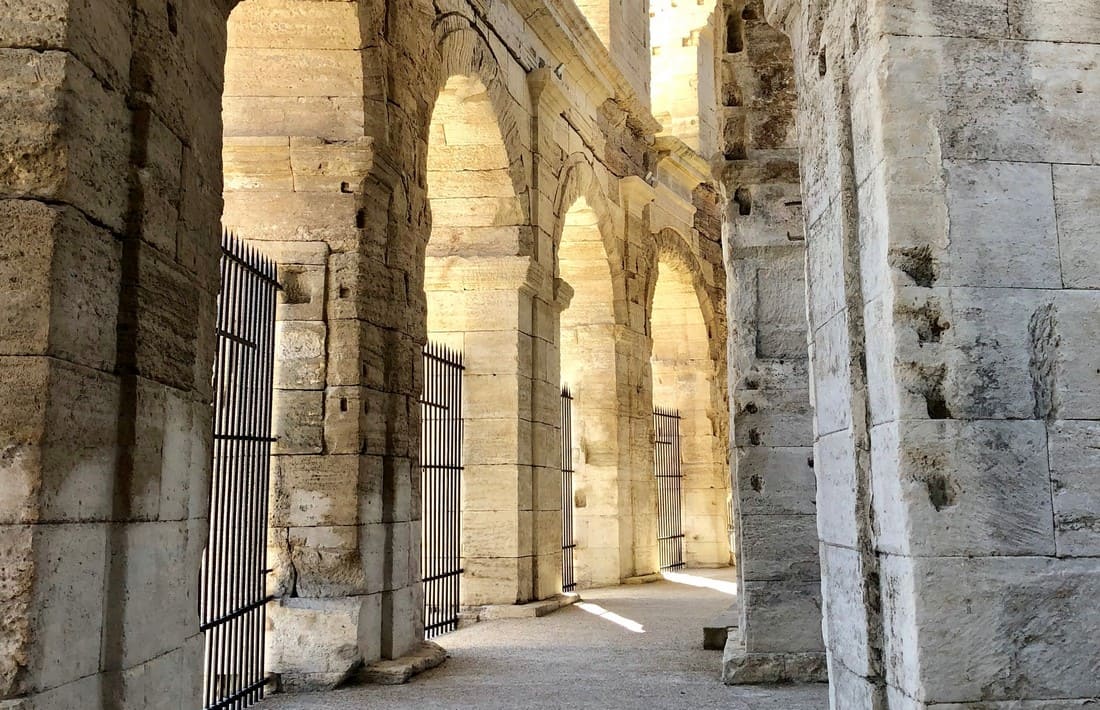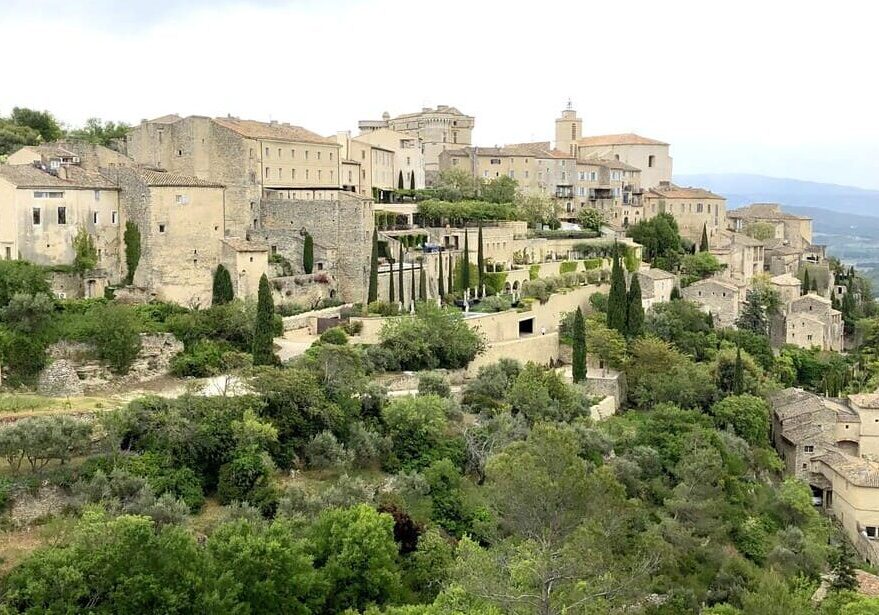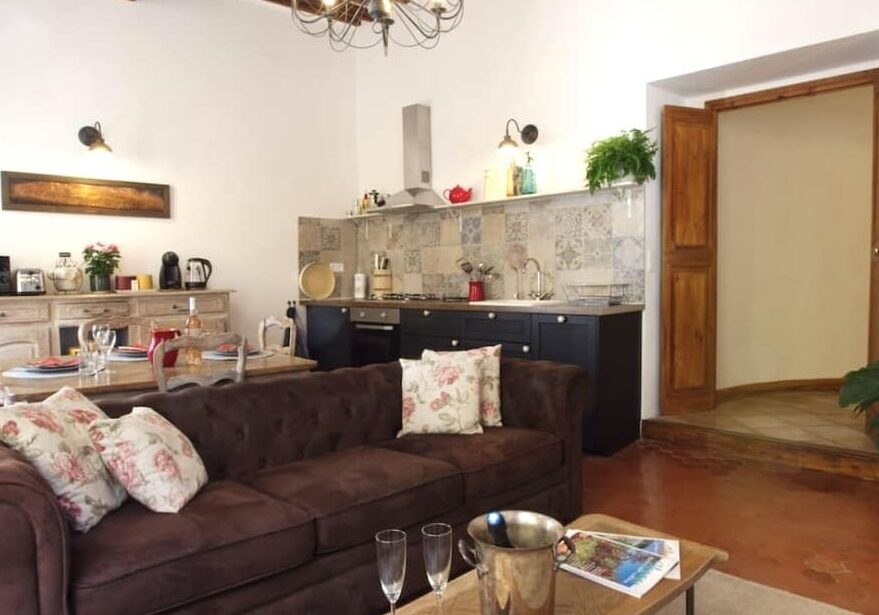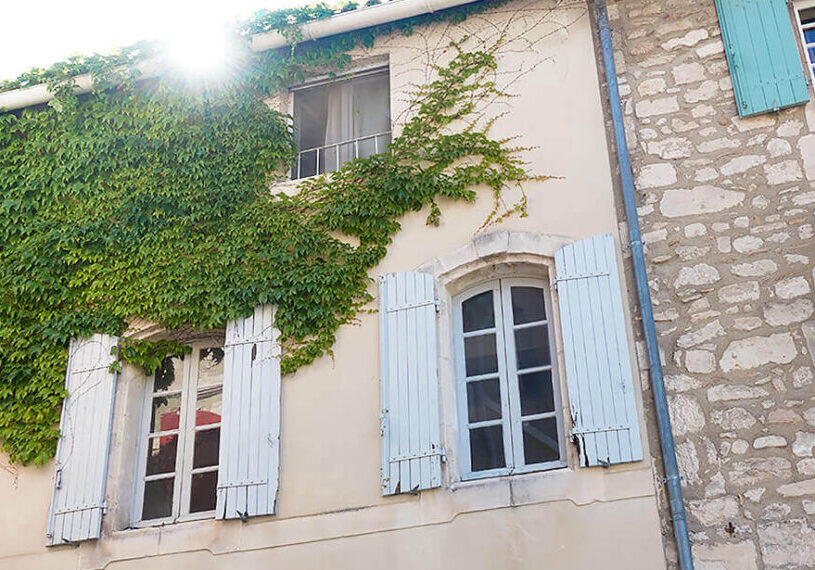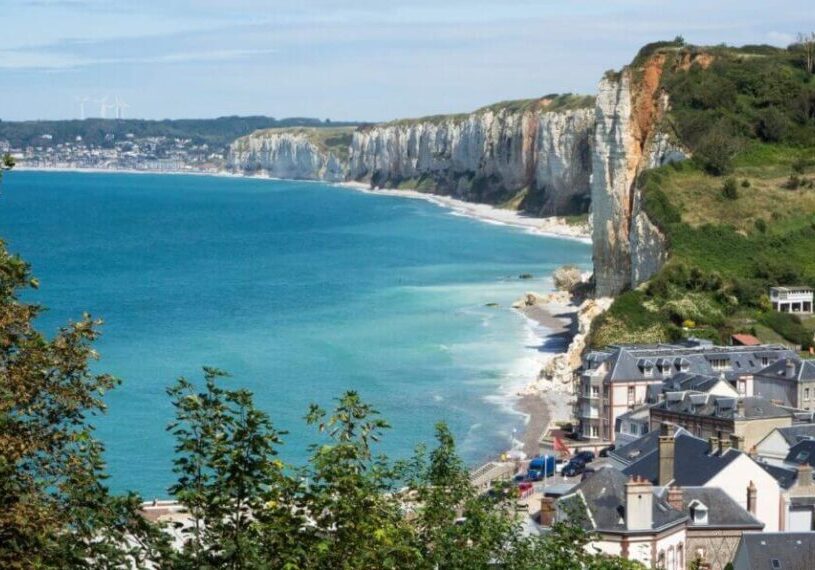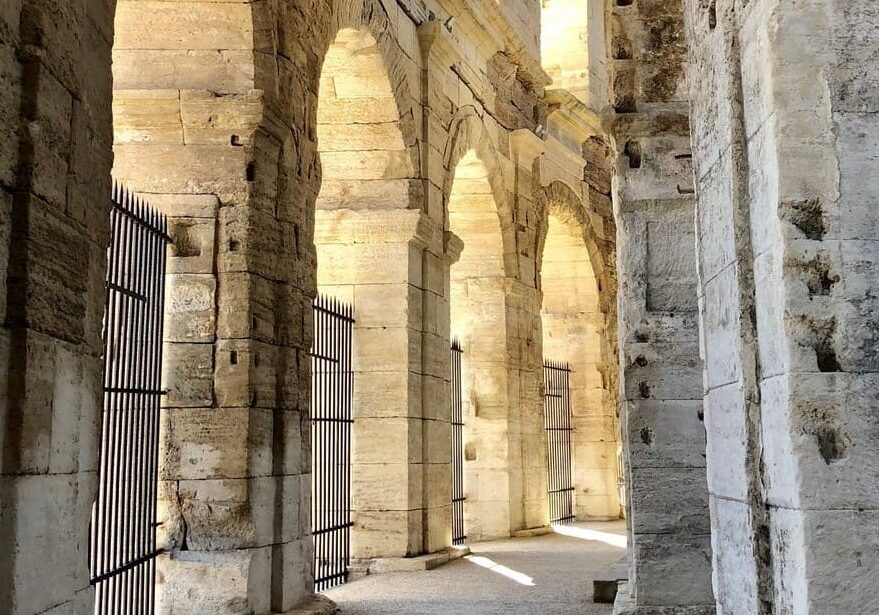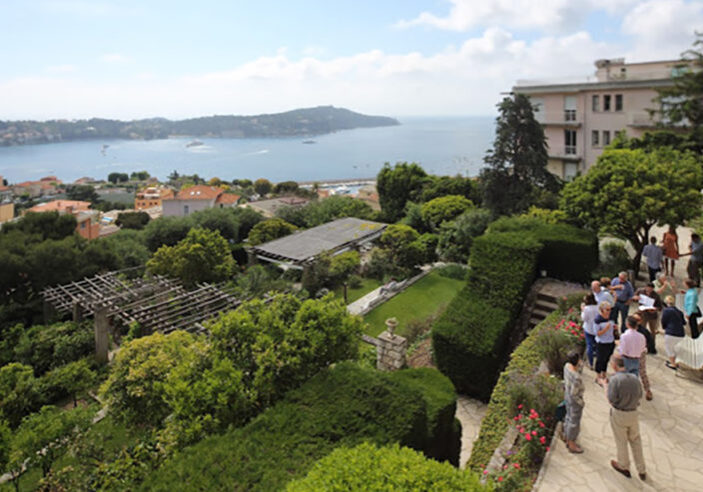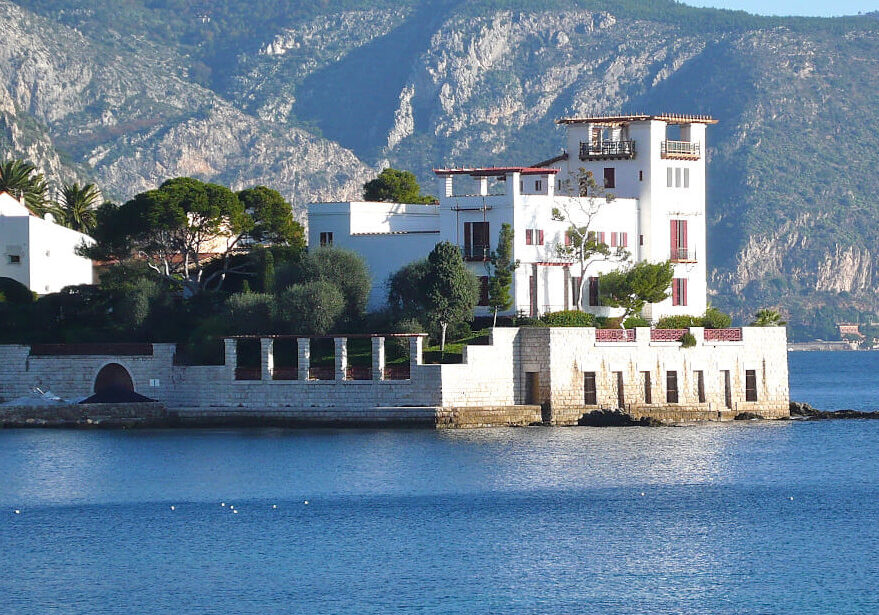Some of the most beautiful features of Arles are the Roman architectural features that still exist in the town today.
It’s truly amazing to be able to walk amongst genuine, beautiful, Roman history. Feel the energy reaching back 2000 years into another age and culture.
One of the most impressive things to discover when travelling in Provence is the Roman architecture in Arles. It is literally wonderful being surrounded by ancient stones and tuning into their stories.
To touch a hand-carved stone crafted by an artisan two millennia ago brings with it an awe-inspiring wonderment that never fails to impress. To descend stairs worn down by countless footfalls over time and witness evidence of the daily life in a bygone era … it's fascinating. Coming from Australia, where architectural examples are limited to the last couple of hundred years, it’s probably the thing I love most about visiting France and especially Arles.

It's marvellous to witness the incredibly impressive and partially restored Roman Architecture. The Amphitheatre, the Théâtre Antique, and Cryptoportique, all in the heart of Arles.
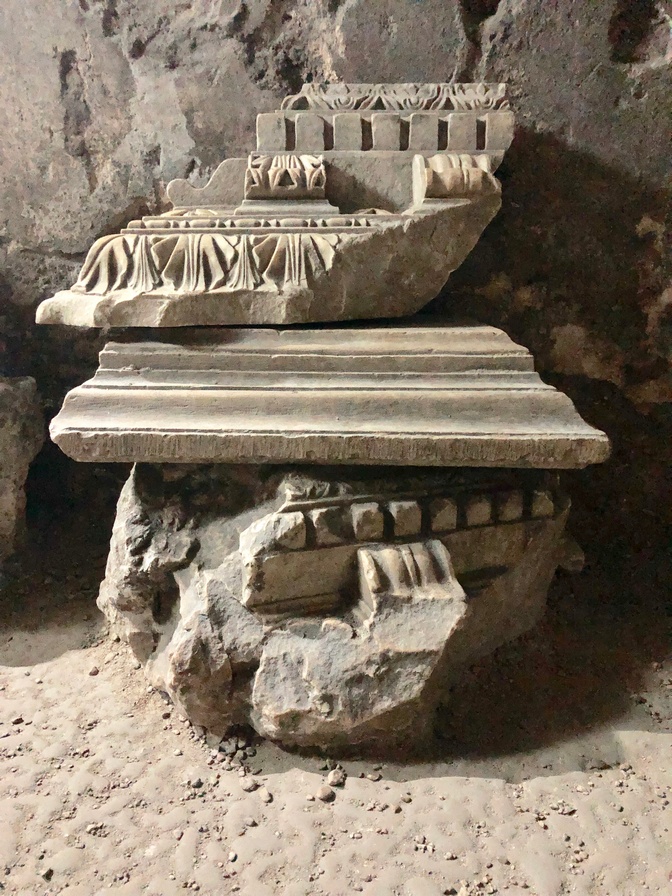
The Amphitheatre in Arles has a rich history.
Built in 90 AD, the Ampitheatre was once celebrated as a centre for public entertainment in the region for more than 4 centuries.
The magnificent structure welcomed crowds of over 20,000 people. They were there to witness chariot races, gruesome spectator sports, and the inevitable gladiator battles.
After the fall of the Roman Empire in the 5th century, it became instead a fortress to protect the settlement inside its walls. Over 200 houses and several churches were built inside the fortifications – a complete and thriving village. It remained in use like this even until 1825, when the structure was declared a national historical monument.
In current times, it draws smaller crowds for bullfighting during the Feria d'Arles, as well as plays and concerts in summer.
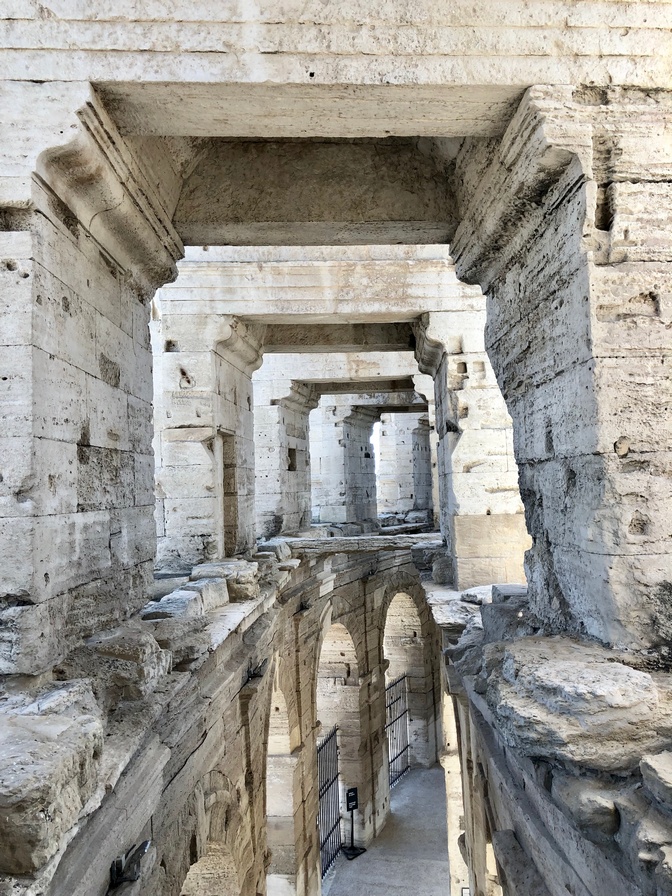
The structure has had extensive restoration works.
This is evident in the newer stones which sit beautifully next to their older brothers.
It’s beautiful to see the careful salvation of such a national treasure. It is also an absolute necessity for the safety and modernisation measures which are necessary to safely support up to 12,000 people for the displays of bullfighting that still happen in Arles. Not my cup of tea, but for a concert, it must be marvellous!

Visit the nearby Théâtre Antique d'Arles.
Buy a ticket for 9 Euros to see both monuments. Just as it may have been across the Millenia the Théâtre is used today for plays and musical performances.
The Théâtre Antique d'Arles is one of the striking features of the Roman architecture in Arles and was built during the reign of Emperor Augustus. During the Middle Ages, the magnificent stonework of the Théâtre was quarried and used as material for other local buildings,. Today there is significantly less of the original structure remaining than the neighbouring Amphitheatre.
Amazingly, the amount and quality of carved stone corbels, friezes, and decorative pillars that are literally laying around on the ground around the site is astonishing. It feels a bit like a supermarket with beautiful relics literally laid out for selection to take home. I wish …
The Théâtre is a National Historic Monument and is also listed as a UNESCO World Heritage Site. Today, especially in summer, it is used for theatrical performances with modern lighting and seating – potentially – for thousands of people. What a sight that would be!
If you have seen any performances at either the Théâtre or the Amphitheatre, let us know in the comments what it was like, and if you would recommend them. I’m sure our community would love to know.

